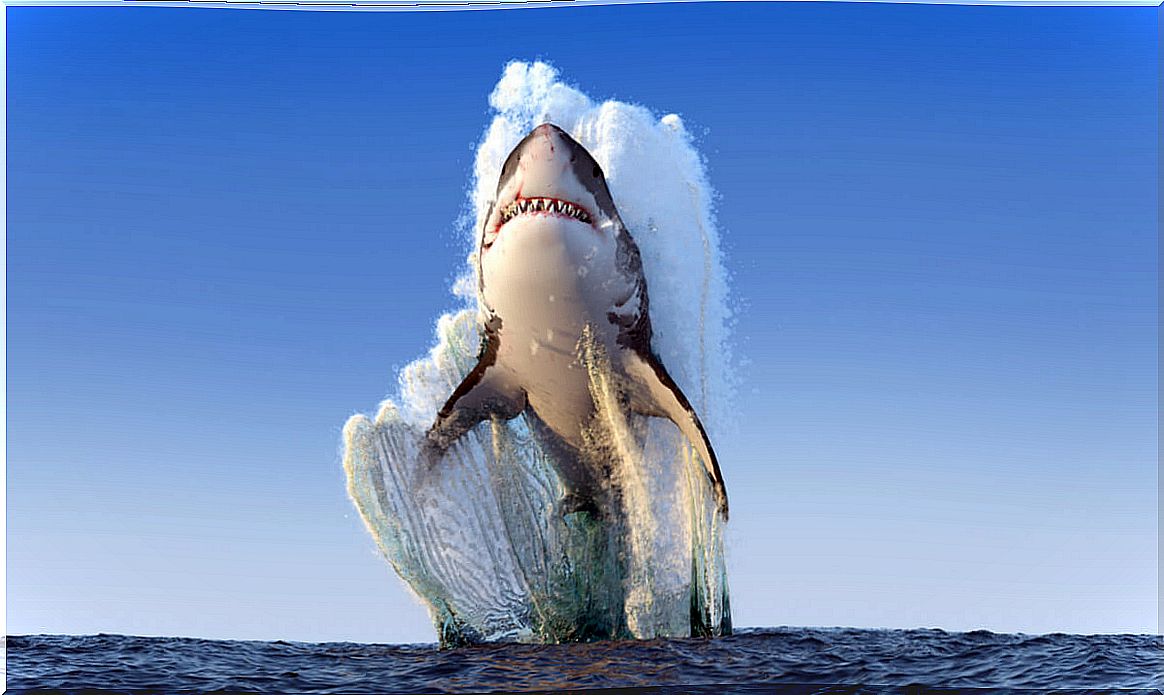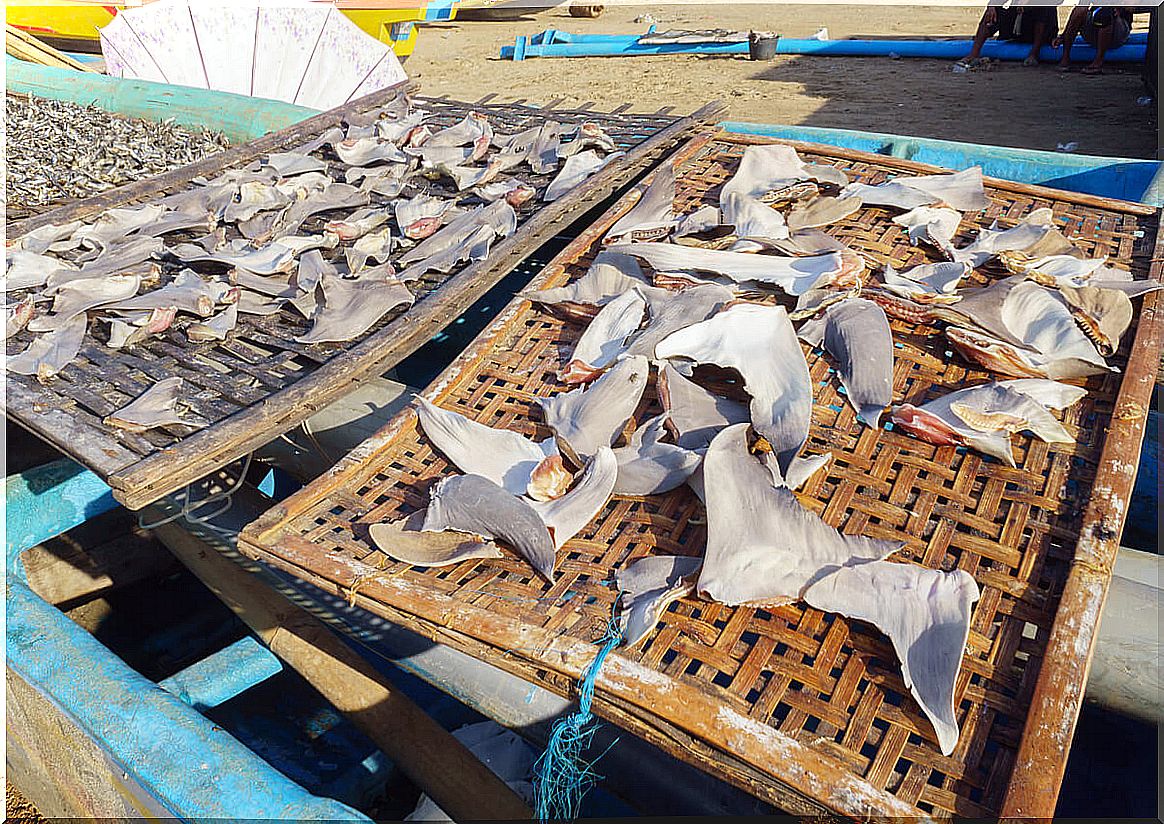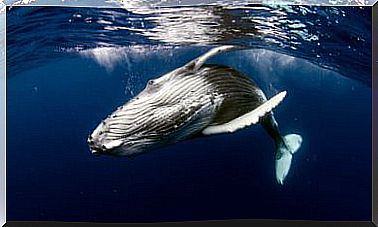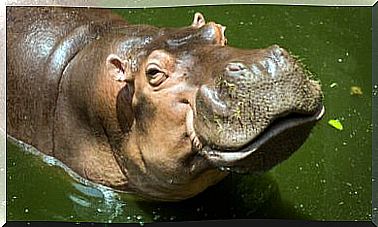Is It True That Sharks Don’t Get Sick?

There are many reasons to be fascinated by sharks. However, the belief that sharks do not get sick is not on the list. To appreciate these marine titans, we must get closer to their wonderful biology.
The first thing is to know that sharks have existed in this world since long before the Age of Dinosaurs. In fact, its evolutionary record dates back to around 450 million years ago. Therefore, these creatures possess adaptations that have allowed them to survive where many others have not.
One of their most striking features, which the stripes share with their relatives, is that they do not have a single bone in their bodies. Their skeletons are made entirely of cartilage. In addition, a shark can produce more than 30,000 teeth in its lifetime. Thus, when a tooth wears out, it falls out and is replaced by another from the subsequent rows.
It’s a myth that sharks don’t get sick
The myth that sharks do not get sick is fed by social networks, as it is common to read that these are the only animals that never get sick or are even immune to all known diseases, including cancer.
In the early 1990s, a non-scientific book became famous that “revealed” how shark cartilage could save cancer patients. Although the document did not claim that sharks never get cancer, it did argue for the rare occurrence of solid tumors in them.
The supposed miraculous properties of the use of shark cartilage in cancer
The first thing to understand these arguments is the concept of angiogenesis. This word refers to the process by which new blood vessels develop from the vasculature already present. Thus, angiogenesis is the formation of new capillaries in tissues.
On the other hand, angiogenesis is common in many types of tumors and is associated with tumor growth. In addition, there are no blood vessels in cartilage, that is, it is avascular.
The development of malignant tumors involving cartilage is very rarely seen. For these reasons, the market for alternative products considers cartilage a source of antiangiogenic compounds.

Science disproves the myth that sharks don’t get sick
Contrary to popular belief, the fact that sharks suffer from various diseases is unquestionable. Without a doubt, scientific reports recorded the incidence of cancer in sharks, including chondromas (cancers of the cartilage).
So far, tumors have been documented in at least 23 species of sharks. Case reports are likely to increase as directed research on cancer in sharks increases.
It should be noted that while cartilage may have antiangiogenic properties, its effectiveness as a treatment has not been proven. That is, oral ingestion of powdered shark cartilage does not report preventive effects against the appearance of carcinogenic tumors.
Shark cartilage is useless in cancer therapy
It should be noted that a compound called Neovastat , extracted from shark cartilage, was evaluated in combination with chemotherapy in a phase III clinical trial for lung cancer. However, after more than six years of follow-up, the trial was closed due to lack of therapeutic efficacy.
The same fate had the Phase II clinical trial for refractory renal cell carcinoma. The same has happened in trials with patients with breast and colon cancer.
In none of these studies was there an improvement in overall survival in them. Despite these negative results in cancer, the market is now trying to associate them with the treatment of diseases such as psoriasis.
The importance of sharks in the marine ecosystem
According to a 2013 study, humans kill around 100 million sharks each year. It should be noted that the overfishing of these animals is due to the demands of their meat, liver oil, cartilage and valuable fins. The fin is often cut from live sharks, for use in shark fin soup, an ancient and prized Asian delicacy.
It is important to note that the depletion of shark populations is concerning because, as apex predators, they help balance ecosystems in the world’s oceans. If we don’t have enough of these predators, cascading changes occur in the ecosystem, impacting even marine plants.
Progressively, organizations such as the Convention on International Trade in Endangered Species of Wild Fauna and Flora (CITES), extend the list of shark species with commercial protection. However, these initiatives may come late.
Shark reproduction is varied and complex
Depending on the species, sharks reproduce in three ways:
- Oviparity: they lay eggs and deposit them in a safe place to hatch.
- Viviparity: live sharks are born directly.
- Ovoviviparity: they carry their young in egg sacs that hatch in the womb, develop in the mother’s body and are born as live sharks. The latter is a combination of the first two strategies.
In addition, the duration of gestation varies with the species of shark, and can last between 5 to 42 months. In addition, the litter can have between two (viviparous) and 100 (oviparous) young. The main consequence of very long gestation periods is that vulnerable shark species recover in numbers very slowly.

Conservation and knowledge
Society is a machine that can dictate the behavior pattern of a patient, the type of treatment he seeks and the one he ultimately takes. Therefore, it is necessary to consider that false social beliefs create insurmountable obstacles.
It is important to bear in mind that the information we obtain through the internet and the print media is mostly unregulated and can present extreme points of view that aggravate existing problems. Of course, the trade in cancer fighting materials from sharks is a clear example of human ignorance.









